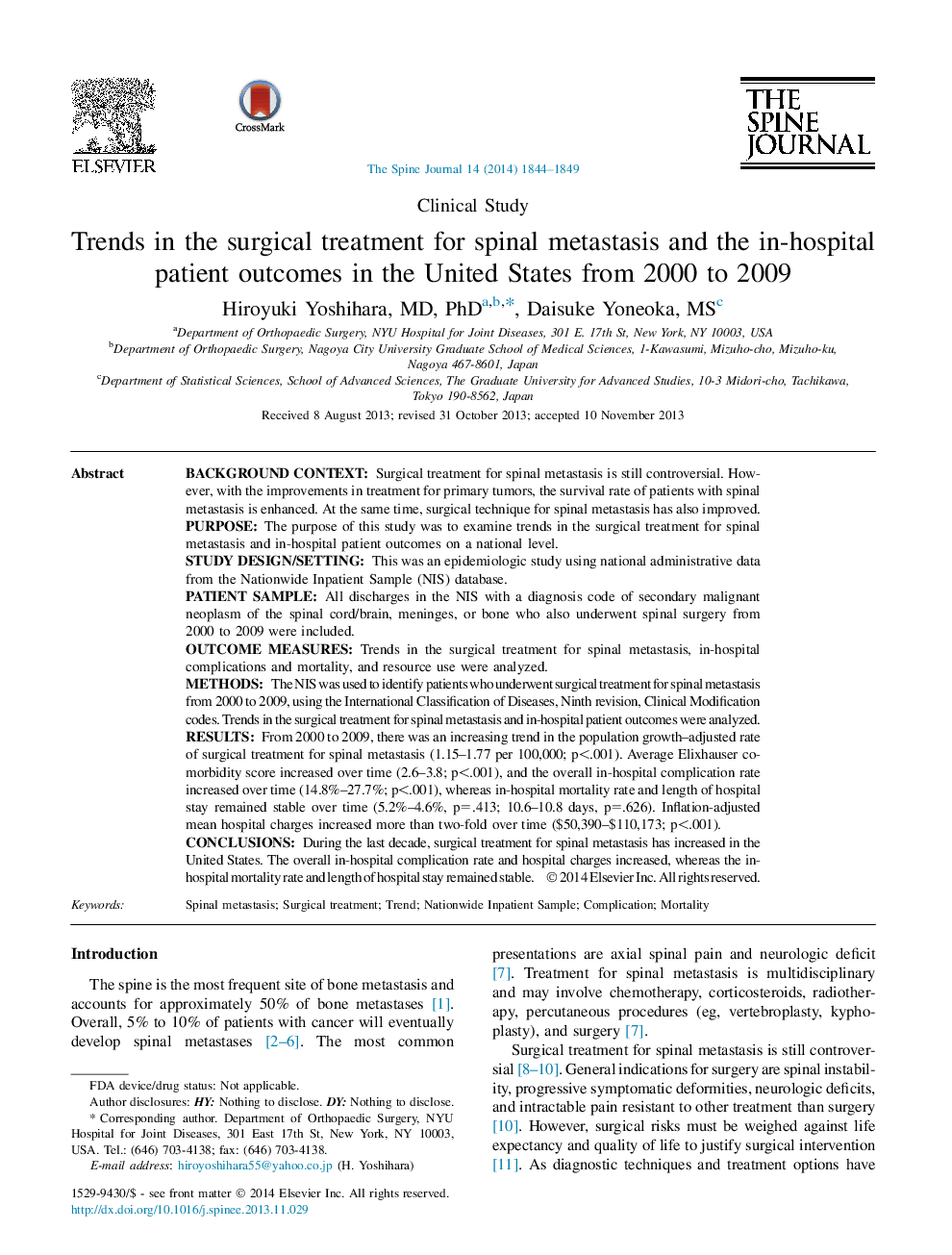| Article ID | Journal | Published Year | Pages | File Type |
|---|---|---|---|---|
| 4096638 | The Spine Journal | 2014 | 6 Pages |
Background contextSurgical treatment for spinal metastasis is still controversial. However, with the improvements in treatment for primary tumors, the survival rate of patients with spinal metastasis is enhanced. At the same time, surgical technique for spinal metastasis has also improved.PurposeThe purpose of this study was to examine trends in the surgical treatment for spinal metastasis and in-hospital patient outcomes on a national level.Study design/settingThis was an epidemiologic study using national administrative data from the Nationwide Inpatient Sample (NIS) database.Patient sampleAll discharges in the NIS with a diagnosis code of secondary malignant neoplasm of the spinal cord/brain, meninges, or bone who also underwent spinal surgery from 2000 to 2009 were included.Outcome measuresTrends in the surgical treatment for spinal metastasis, in-hospital complications and mortality, and resource use were analyzed.MethodsThe NIS was used to identify patients who underwent surgical treatment for spinal metastasis from 2000 to 2009, using the International Classification of Diseases, Ninth revision, Clinical Modification codes. Trends in the surgical treatment for spinal metastasis and in-hospital patient outcomes were analyzed.ResultsFrom 2000 to 2009, there was an increasing trend in the population growth–adjusted rate of surgical treatment for spinal metastasis (1.15–1.77 per 100,000; p<.001). Average Elixhauser comorbidity score increased over time (2.6–3.8; p<.001), and the overall in-hospital complication rate increased over time (14.8%–27.7%; p<.001), whereas in-hospital mortality rate and length of hospital stay remained stable over time (5.2%–4.6%, p=.413; 10.6–10.8 days, p=.626). Inflation-adjusted mean hospital charges increased more than two-fold over time ($50,390–$110,173; p<.001).ConclusionsDuring the last decade, surgical treatment for spinal metastasis has increased in the United States. The overall in-hospital complication rate and hospital charges increased, whereas the in-hospital mortality rate and length of hospital stay remained stable.
